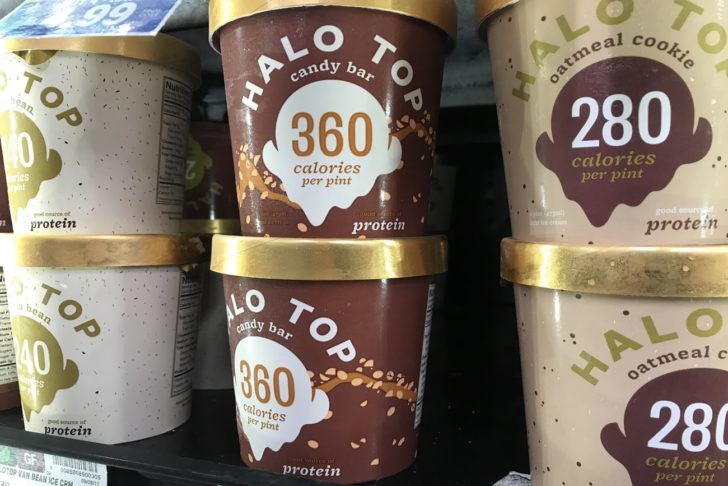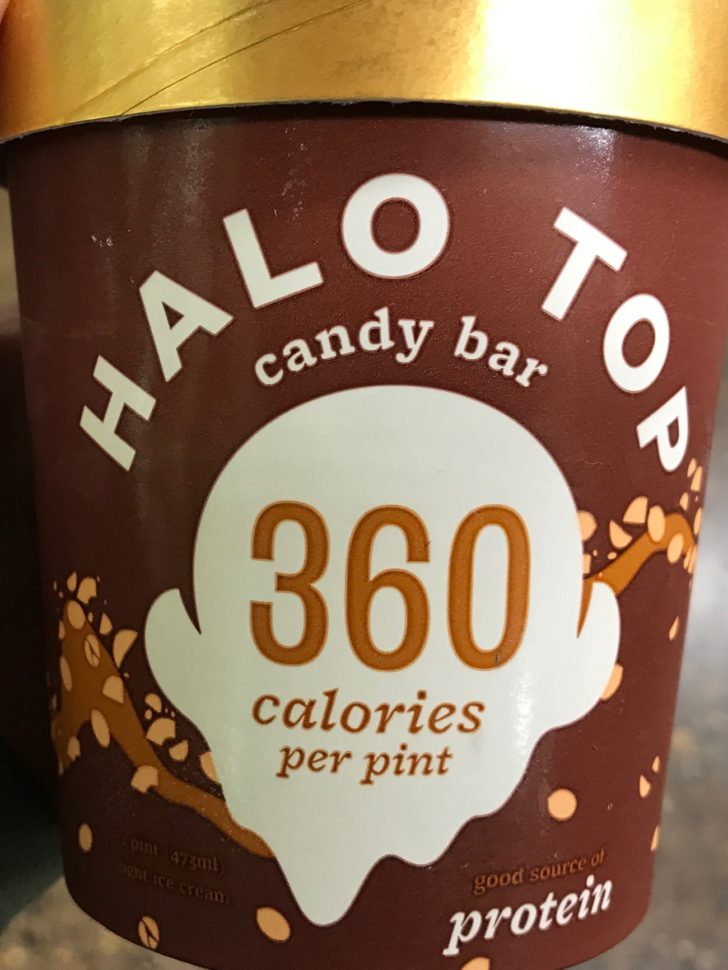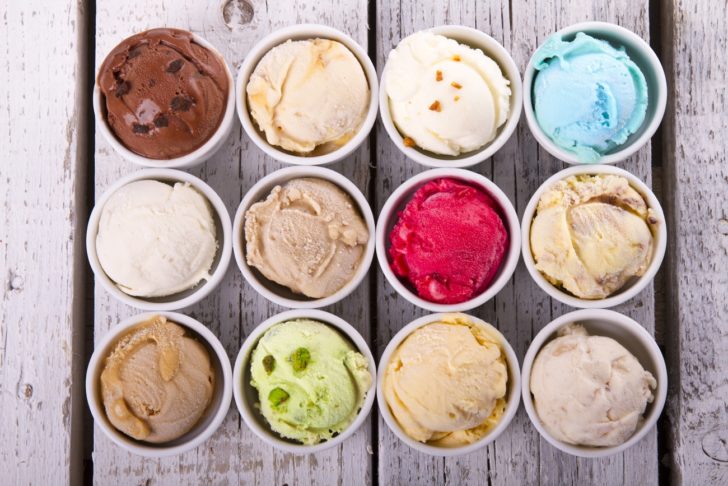
I scream, you scream, we all scream for Halo Top? Halo Top ice cream has become the best-selling frozen dessert (calling it “ice cream” just doesn’t feel right), outselling Ben & Jerry’s and Häagen-Daazs. What is it about this 5-year old company’s product that makes it so popular? Halo Top competes with ice cream sales, but is marketed differently — as a healthy choice. Compared to ice cream, Halo Top contains fewer calories, less sugar, less fat, and slightly more protein. But is it actually healthy? Let’s take a look.
Halo Top fans spout about the thrill of being able to consume a pint of Halo Top for the same caloric cost as ½ cup of regular (real) ice cream. The calorie difference is due to the use of a sugar replacement called Erythritol, which adds sweetness but with a lot fewer calories. Erythritol is a sugar alcohol — sugar alcohols are carbohydrates used in diet food that are either naturally occurring or manmade. In moderation, sugar alcohols are harmless, but too much can cause diarrhea, bloating and gas because they are not completely absorbed by the body and are fermented by bacteria in the large intestine. These symptoms can occur when eating as few as 10 grams of sugar alcohol. One serving of Halo Top has 4-5 grams of Erythritol. With the tag line “You’re going to want the whole pint” and the constant comparison between the calories in a pint of Halo Top and ½ cup of regular ice cream, consumers are encouraged to devour the entire pint (16 – 20 grams of Erythritol).


The definition of ice cream is: “a soft frozen food made with sweetened and flavored milk fat”. Halo Top has 2 grams of fat per serving, compared to 16-ish grams in regular – dare I say real – ice cream. I believe this could be the reason that many of the people I talk with say that they follow up a pint of Halo Top with some Chunky Monkey. If we’re going into an eating experience expecting the satisfaction that comes with ice cream, but then not receiving it, it makes sense that we’d seek out another food looking for real satisfaction.
The bottom line: if you would like to eat some Halo Top, go for it (in moderation to avoid gastrointestinal issues), but don’t count on it for any magical health benefits. Non-vegans (AKA most of us) need not seek out high protein “desserts”, because the protein provided in balanced meals and snacks provides adequate protein. Health is a product of our overall food intake, not the result of consuming specific food products claiming to be healthy.
Halo Top is a diet food that has the same deprivation backlash potential as any other diet food (have you ever eaten less than an entire box of Snackwell cookies? Then “cave” to the Oreos you wanted to begin with?). When you have a craving for ice cream, get yourself a scoop or two of normal, full-fat ice cream.
Meaghan Ormsby, MS, RD is a Seattle area dietitian who promotes eating well & keeping it real @ Kitchen Toolz













